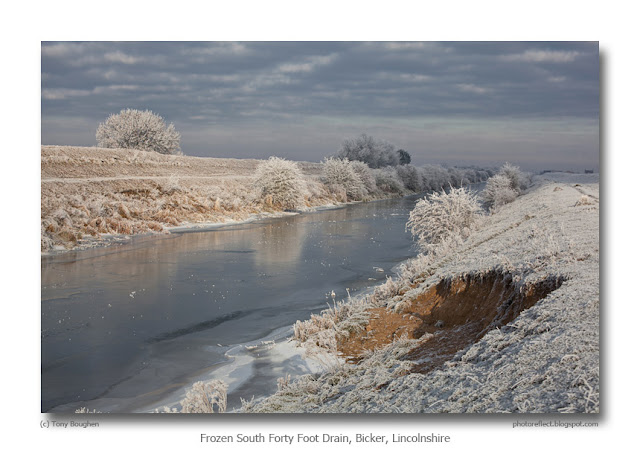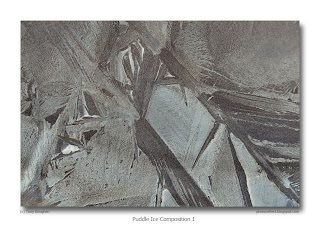click photo to enlarge
Apparently December 2010 was the coldest for the past one hundred and twenty years. It was certainly the coldest I can remember in terms of average temperatures and the minimum values to which we were subjected. Thinking back through my experience of winters, that of 1963 beat it (thus far) in days of continuous snow on the ground, but the four weeks or so we have had is much more than usual. Many have lamented the weather because it has restricted what they can do, has resulted in higher than usual heating bills, and has been depressing. Certainly I haven't travelled as far afield as I would have done in more typical December weather, and the higher heating bills will follow our higher energy usage as surely as night follows day. But depressing? No! In fact, it has been a real gift to photographers. The days of compete white-outs, hoar frost, frozen water and fog have presented familiar subjects in unfamiliar guise, and photographic subjects haven't had to be searchd for - they've simply popped up at every turn.Today's photograph is probably the last of the hoar frost images that I will post. It shows a small-holding across a cropped field. Without the heavy dousing of white I doubt whether I would have pointed my camera at it.
This particular image has one attribute that none of my other photographs posesses. All my post processing is done using one or more of the "heavyweight" image processing packages. This one, by way of an experiment, I ran through a free online photo-editor called Pixlr. I like to keep up to date with freeware, open-source and online software offerings, and make good use of several such packages that are as good as, or better than, commercial equivalents. Though this particular image didn't need a great deal of editing, Pixlr (daft name!) did what I wanted very well, and the user-interface was quite intuitive. I won't use it on a regular basis, but I could see a use for it when away from home, or as something to recommend to friends who need to edit images only occasionally and don't want to download and install any of the free packages. It's worth a look.
photograph and text (c) T. Boughen
Camera: Canon
Mode: Aperture Priority
Focal Length: 92mm
F No: f9
Shutter Speed: 1/100
ISO: 320
Exposure Compensation: -0.33 EV
Image Stabilisation: On







































